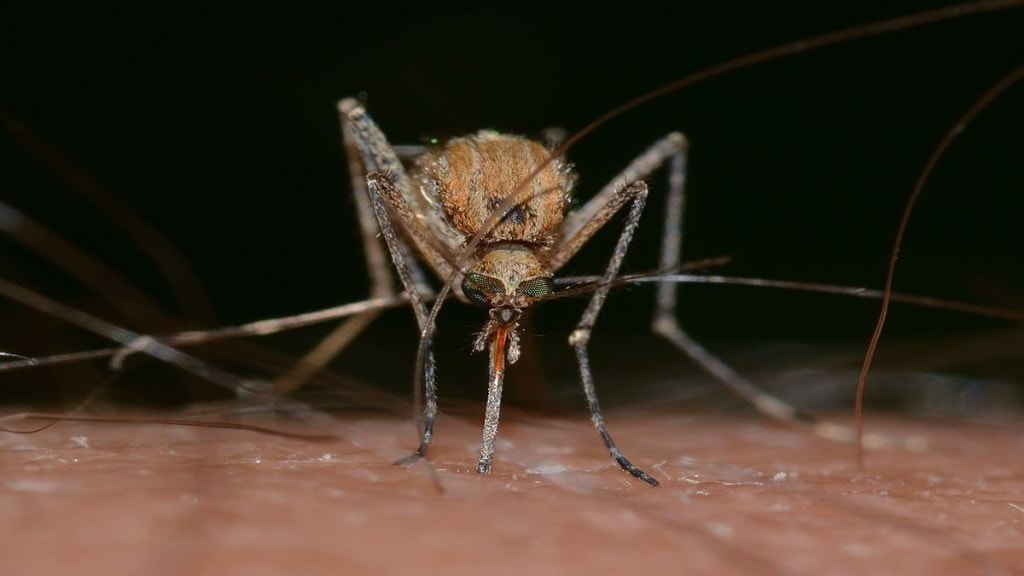Lymphatic Filariasis, also known as Elephantiasis, continues to be a major public health challenge in India. A vector-borne parasitic disease, it is an extremely painful and disfiguring disease that spreads through the bite of mosquitoes.
India is a major contributor to the global burden, accounting for over 40 percent of all LF cases globally. According to the World Health Organization (WHO), the global baseline estimate of people affected by lymphatic filariasis was 25 million men with hydrocele and over 15 million people with lymphoedema. At least 36 million people remain with these chronic disease manifestations, it stated.
Dr. NK Ganguly, Former Director General, Indian Council of Medical Research (ICMR) told Financial Express.com that the disease encompasses asymptomatic, acute, and chronic conditions.
“Asymptomatic individuals show no external signs of infection but can experience internal damage to the lymphatic system, kidneys, and immune system. Acute cases involve local inflammation of the skin, lymph nodes, and lymphatic vessels. Chronic conditions include lymphoedema (tissue swelling) and hydrocele (scrotal swelling), which can lead to disability,” Dr. Ganguly pointed out.
He also revealed that asymptomatic individuals show no external signs of infection but can experience internal damage to the lymphatic system, kidneys, and immune system. Acute cases involve local inflammation of the skin, lymph nodes, and lymphatic vessels. “Chronic conditions include lymphoedema (tissue swelling) and hydrocele (scrotal swelling), which can lead to disability,” he added.
According to WHO, the painful and profoundly disfiguring visible manifestations of the disease occur later in life and can lead to permanent disability. Moreover, these patients are not only physically disabled, but suffer mental, social and financial losses which contribute to stigma and poverty.
WHO reveals that over 882 million people in 44 countries worldwide remain threatened by lymphatic filariasis and require preventive chemotherapy to stop the spread of this parasitic infection.
According to the global health agency, lymphatic filariasis can be eliminated by stopping the spread of infection through preventive chemotherapy with safe medicine combinations repeated annually.
Burden of Lymphatic Filariasis in India
According to Dr. Ganguly, the burden of lymphatic filariasis weighs heavily upon India, accounting for a staggering 40 percent of all global LF cases. Moreover, approximately 640 million people in India are currently at risk of contracting the disease.
“LF has been reported in 336 districts across 20 States/Union Territories in India. 90 percent of the LF burden in India rests upon eight tropical states including Uttar Pradesh, Bihar, Jharkhand, West Bengal, Chhattisgarh, Maharashtra, Odisha, and Madhya Pradesh,” he told Financial Express.com.
Along with a significant burden of Lymphatic Filariasis, India faces several challenges in its battle against the disease.
“Firstly, fostering greater acceptance of the extensive regimen of tablets, especially among children, is an uphill task. The sizable volume of medication required can often be daunting for patients, leading to resistance or non-compliance. Secondly, the disease’s epidemiological variance presents its own set of difficulties. The sporadic nature of the disease, both in terms of geographical distribution and affected population clusters, complicates containment and elimination efforts. Thirdly, a significant barrier is the lack of readily accessible and reliable diagnostics. Identifying the presence of the parasite is crucial to any control efforts, but the current diagnostic methods available in many regions are not ideal,” Dr. Ganguly told Financial Express.com.
It is noteworthy that Lymphatic Filiaris causes long-term suffering and morbidity as well as social and economic burden. According to 2002 ICMR study, the annual economic loss due to Lymphatic Filiaris is close to $1 Billion for the country.
“For the successful elimination of Lymphatic Filariasis, we must implement a comprehensive vector control program, led by experts in entomology, to target and minimize the disease-carrying vectors. Moreover, the bolstering of funding is critical to ensuring that we are able to extend our reach across the remotest areas. These concerted actions are the keys to overcoming these challenges and achieving our goal of eliminating this disease,” he pointed out.
According to Dr. Bhupendra Tripathi, Country Lead, NTD Elimination, Bill & Melinda Gates Foundation (BMGF), India’s dense population, tropical environment, and lack of awareness are some of the possible causes of India’s LF burden.
“…This can hinder efforts to reduce transmission and manage the disease. In addition, the social stigma associated with the physical symptoms of LF can deter people from seeking help or treatment. It is, however, important to note that the Government of India has made significant efforts in recent years to eliminate LF,” Dr. Tripathi told Financial Express.com.
What is the Indian government doing to tackle the burden of Lymphatic Filariasis?
In January this year, the Ministry of Health and Family Welfare launched a nationwide campaign to tackle lymphatic filariasis (LF). The country is aiming at eliminating the disease by 2027 through a door-to-door mass drug administration program.
While inaugurating the National Symposium on India’s Roadmap to Eliminate Lymphatic Filariasis, Health Minister Mansukh Mandaviya had emphasised that India is committed to eradicate the disease from the country.
In February this year, the central government launched a nationwide Mass Drug Administration (MDA) campaign aimed at ending disease transmission through the door-to-door administration of anti-filarial drugs, especially in 10 filaria-affected states.
In the same month, the campaign was initiated in 10 endemic districts of Odisha. These include Balasore, Bhadrak, Bolangir, Cuttack, Kalahandi, Kandhamal, Khurda, Nayagarh, Nuapada and Rayagada.
Under the campaign, the government is administering LF drugs to 640 million people at risk in 930 blocks in 90 affected districts in 10 states. In Odisha, 51,371 trained drug administrators, including ASHAs, are visiting every household in 10 districts to ensure drug consumption by 13 606 948 beneficiaries.
“India has ramped up efforts in eliminating Lymphatic Filariasis a Vector Borne Disease caused by Culex mosquitoes which causes disability well ahead of global targets to safeguard communities from disability, social and economic insecurity. Government of India has already unveiled a renewed five-pronged strategy for elimination of LF,” the Ministry said in a statement.
The five-pronged strategy for elimination of LF include the following:
- MDA campaign twice a year.
- Early diagnosis and treatment
- Integrated vector control with multi-sectoral coordinated efforts.
- High-level advocacy
- Leveraging existing digital platforms for LF and exploring alternative diagnostics
“…Since the beginning the government has implemented policies to combat this disease. One of the significant achievements for elimination came in 2018, the Accelerated Plan for the Elimination of Lymphatic Filariasis (APELF) was launched. The plan made a commitment to introduce newer intervention strategies and improve implementation of MDA and monitoring, a block strategy for intensive mobilization, and evaluation and surveillance strategies. Since then, the government has regularly emphasized the need for a holistic strategy to combat the disease. This increased outreach effort has also been supported by the Mission Steering Group with approval for additional resources towards block level community mobilization,” Dr. Tripathi told Financial Express.com.
Dr. Tripathi also revealed that the government has also done a great job by scaling up drug therapy involving administration of Ivermectin with DEC and albendazole (IDA) by procuring ivermectin domestically.
“Earlier this year, Dr. Mansukh Mandaviya, the Union Minister for Health and Family Welfare and Chemicals and Fertilizers of India, made a strong commitment. He declared a determined effort to eliminate lymphatic filariasis in India by 2027, three years ahead of the global target. This can be achieved through the mission mode roadmap that the government has put in place by involving multiple partners, sectors, and targeted initiatives,” he told Financial Express.com.
One of the biggest challenges that the programme faces is the awareness levels amongst people of this disease, he revealed.
“For instance, the government in this mission mode approach has decided to conduct two mass drug administration rounds on the 10th of February and 10th of August. On these days, the government distributes free drugs to the people living in endemic districts. However, despite that the levels of consumption of the medication are very low. Civil society organizations such as Rotary etc. have been extremely helpful in encouraging higher uptake at a community level, but a lot more is still to be done. It is very important, if we need to stop the transmission of this disease that all individuals consume these drugs…People with a higher microfilariae load can experience more itching, but it subsides quickly). We need people to either be at home when the DA visits are ongoing during the MDA rounds or visit the booths for set up for drug administration to take the medication,” Dr. Tripathi told Financial Express.com.
According to Dr. Tripathi, an additional challenge is in disease detection.
“Since the detection of parasite carriers is only effectively possible by conducting blood testing at night (a practice known as Night Blood Survey), there is incomplete availability of data. The night blood surveys are expensive, time-consuming, and poorly accepted by the community and if done at the wrong time, can often have misleading results. Along with this, there is a need for private companies and government funding to procure high-capacity Filariasis Test Strips (FTS) as well,” he told Financial Express.com.
‘Climate Change: A major challenge’
Dr. Tripathi also revealed that climate change has significant implications for the spread of mosquito-borne diseases like lymphatic filariasis. “Rising
temperatures associated with climate change enables mosquitoes to expand their range to higher altitudes and latitudes, it increases the risk for all vector borne disease and not only LF,” he maintained.
Additionally, the occurrence of more frequent and intense extreme weather events, such as floods and droughts, disrupts mosquito breeding sites and hampers efforts to control mosquito populations, potentially leading to LF outbreaks, Dr. Tripathi emphasised.
“Furthermore, changes in rainfall patterns, influenced by climate change, can affect the availability of suitable breeding sites for mosquitoes, posing challenges for the control of LF transmission in some areas. Overall, climate change exacerbates the risk and complexity of LF transmission, necessitating comprehensive strategies to combat the disease, which are in place,” he told Financial Express.com.
What is the current status of the MDA campaign?
According to Dr. Ganguly, following a phased approach, the Mass Drug Administration (MDA) campaign was started in February this year, targeting 91 districts across 10 states in India. The second phase of the MDA campaign is scheduled to commence on August 10.
“During this phase, the focus will shift to 89 districts in 8 states. The primary goals of this phase include ensuring effective compliance with the administration of medicines and increasing coverage among the targeted population. To achieve these objectives, various activities are being undertaken to promote awareness about lymphatic filariasis and encourage drug consumption among the people, especially those residing in vulnerable areas,” Dr. Ganguly told Financial Express.com.








